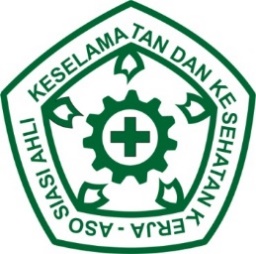Penatalaksanaan awal pada pasien dengan cedera otak traumatik
Abstract
Traumatic brain injury is a major cause of morbidity and mortality, and the third most common cause of injury that causes death. 69 million people suffer from traumatic brain injuries each year. Initial treatment was carried out on a man aged 21 years, with a weight of 62 kg and a height of 160 cm. The patient came to the emergency unit brought by his family because of a traffic accident with a motor vehicle, when the accident the patient was not under the influence of drugs and was not drunk. The patient's GCS was E2V2M4. The patient was given initial management in the form of an airway evaluation by installing an oropharyngeal airway (OPA) for airway patency, breathing at a respiratory rate of 22 times/minute, and circulation with a blood pressure of 133/78 mmHg and a pulse rate of 102 times/minute, the patient's body temperature was 36. ,50 C. The patient was diagnosed with extensive subarachnoid hemorrhage based on radiological examination with non-contrast CT scan of the head requiring craniotomy for evacuation of bleeding by a neurosurgeon specialist. Initial management of the patient is carried out in the emergency unit by evaluating the primary survey and secondary survey. Evaluation of the patient is carried out while monitoring the patient's hemodynamic state remains stable. Speed and accuracy in providing initial treatment to traumatic brain injury patients play a very important role in preventing the development of primary injury to secondary injury and can provide a better prognosis for patients.
Keywords
Full Text:
PDFReferences
ACS.(2018). Advanced Trauma Life Support (ATLS), Student Course Manual, American College of Surgeons, Committee on Trauma.
Brain Trauma Foundation.(2016). Guidelines fot the management of severe traumatic brain injury 4th edition. American Association of Neurological Surgeons.
Bratton SL, Chestnut RM, Ghajar J, McConnell Hammond FF, Harris OA, Hartle R.(2017). Brain Trauma Foundation; American Association of Neurological Surgeons; Congress of Neurological Surgeons; Joint Section on Neurotrauma and Critical Care, AANS/CNS. Guidelines for the management of severe traumatic brain injury. I. Blood pressure and oxygenation. J Neurotrauma, 24, 7-13.
Brain Trauma Foundation (BTF). (2007). Guidelines for prehospital management of TBI 2nd ed.
Curry P, Viernes D, Sharma D.(2011). Perioperative management of traumatic brain injury. Anesth Analg, 1(1), 27–35.
Curry P, Viernes D, Sharma D.( 2011). Perioperative management of traumatic brain injury. Int J Crit Illn Inj Sci, 1, 27-35.
Dewan MC, Rattani A, Gupta S, Baticulon RE, Hung Y-C, Punchak M, Agrawal A, Adeleye AO, Shrime MG, Rubiano AM, Rosenfeld JV, Park KB. (2019). Estimating the global incidence of traumatic brain injury. J Neurosurg, 130(4), 1080-1097.
Newfield P, Field LH, Hamid RKA. Pediatric neuroanesthesia. Dalam: Newfield P, Cottrell JE, Smith DS. (2001). Anesthesia and Neurosurgery, 4th ed, Philadelphia: Mosby, 501-29.
Qureshi H, Mithaiwala H, Ezell J, Maurtua M. (2017) Anesthetic Management of Traumatic Brain Injury. Clin Med Rev Case Rep, 4, 159.
Sunaryo Basuki W, Suryono B, Chasnak Saleh S. (2015). Penatalaksanaan Perioperatif Cedera Kepala Traumatik Berat dengan Tanda Cushing. J Neuroanestesi Indones, 4(1),34–42.
DOI: https://doi.org/10.52364/sehati.v2i1.16
Refbacks
- There are currently no refbacks.
Copyright (c) 2022 Pelantar Press

This work is licensed under a Creative Commons Attribution-NonCommercial-NoDerivatives 4.0 International License.

Ciptaan disebarluaskan di bawah Lisensi Creative Commons Atribusi-NonKomersial 4.0 Internasional.




